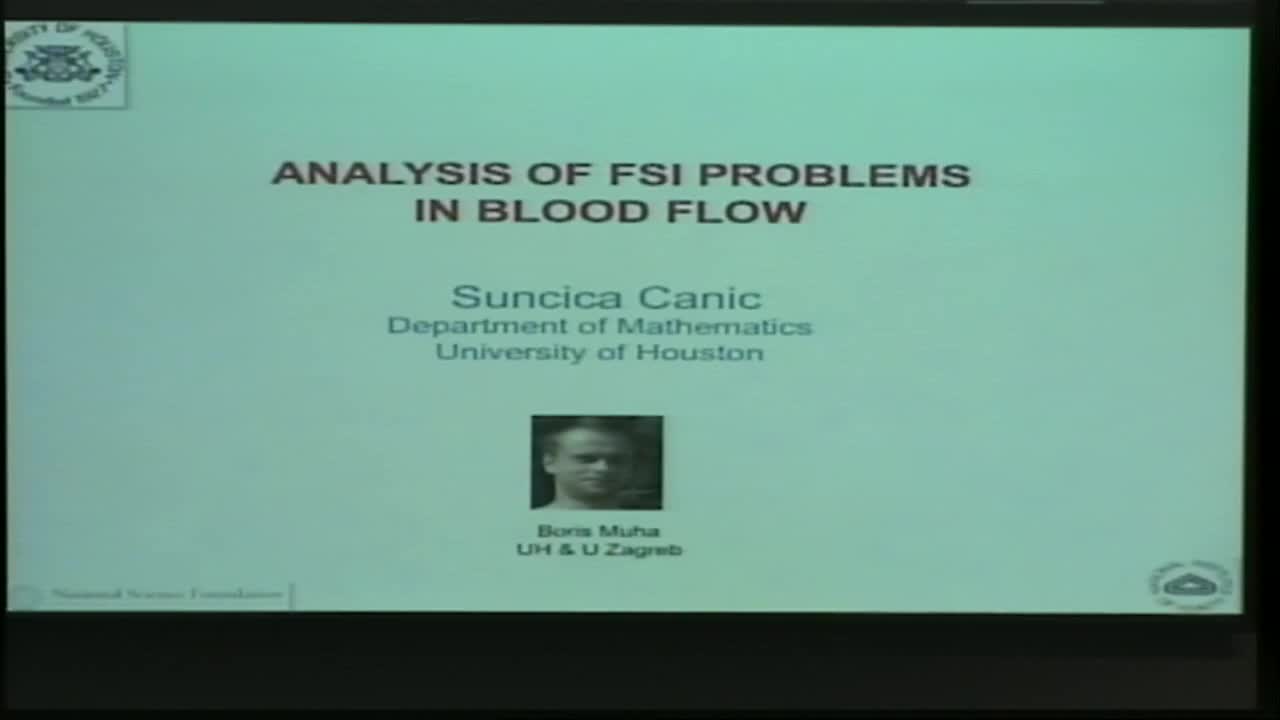Mathematical Analysis of Fluid-Solid Interaction in Blood Flow
Presenter
July 30, 2013
Keywords:
- Mathematical Analysis, existence of solutions, fluid-solid interaction
Abstract
The development of existence theory for moving boundary, fluid-solid interaction problems involving a viscous, incompressible fluid has become particularly active since the 1990's. The first existence results were obtained for the cases in which the structure is completely immersed in the fluid, and the structure was considered to be either a rigid body, or described by a finite number of modal functions. The results that followed concerned the coupling between the Navier-Stokes equations and $2D$ or $3D$ linear elasticity, where the coupling was assumed on a fixed fluid-structure interface (linear coupling). The first existence result that considered the coupling between an incompressible, viscous fluid and an elastic structure, where the coupling was assumed to take place at a deformed fluid-structure interface (nonlinear coupling), was obtained in 2004 by B. daVeiga. Since then, several works in this area, considering different structural models, and different mathematical techniques, were obtained. Recently, the speaker, together with collaborator Muha, obtained the first constructive existence proof for a benchmark FSI problem in blood flow, which was recently extended to study fluid-multi-layered structure interaction problems. The main steps in the proof rely on a loosely-coupled numerical scheme, in which the fluid and the structure sub-problems are separated by an operator-splitting approach. In this lecture, the speaker will give an overview of the existing literature on the existence analysis for FSI problems, and will show the main ideas behind the constructive proof of the existence of a solution to a benchmark problem in FSI in blood flow. A new result that indicates that the presence of a thin fluid-structure interface with mass regularizes solutions to this FSI problem, will be discussed.
